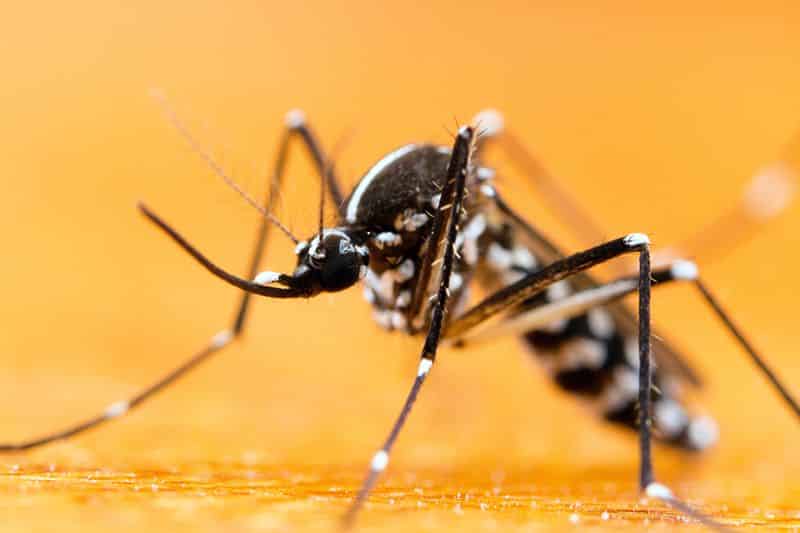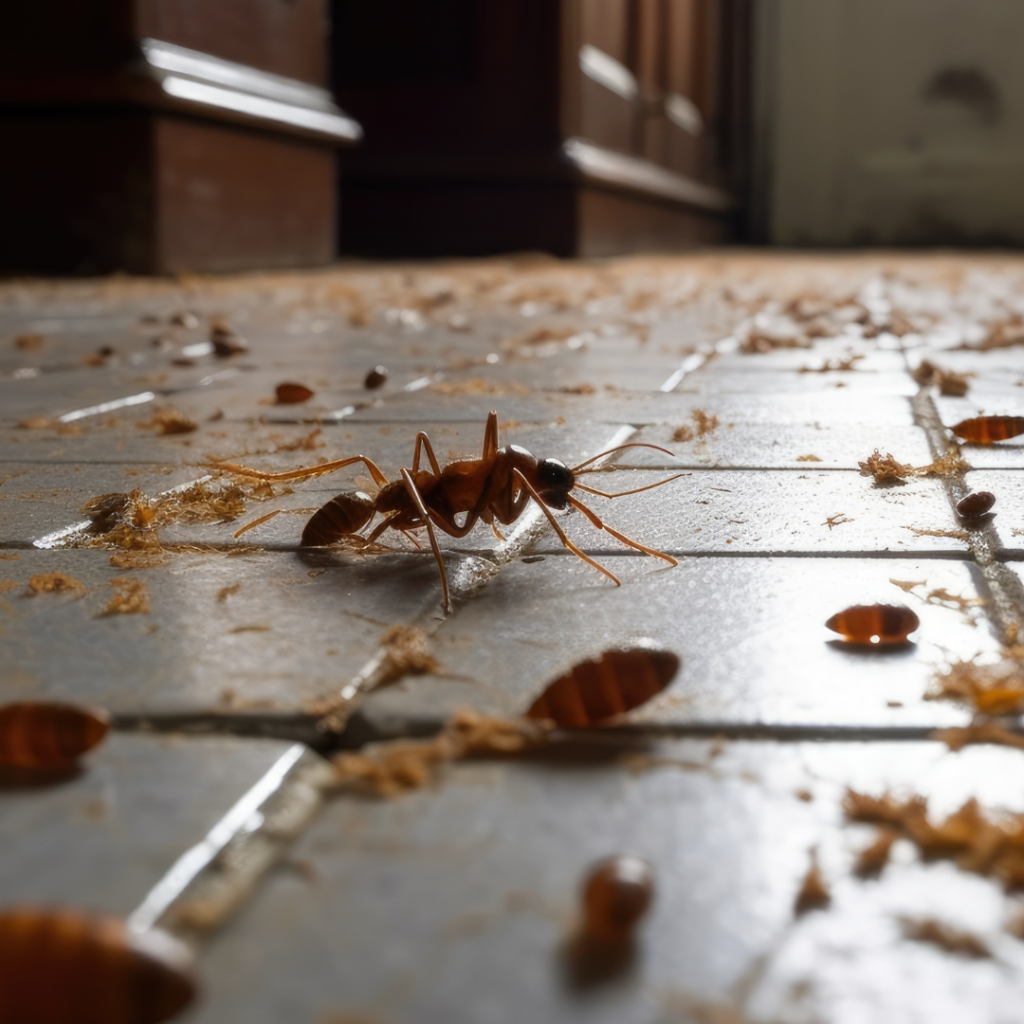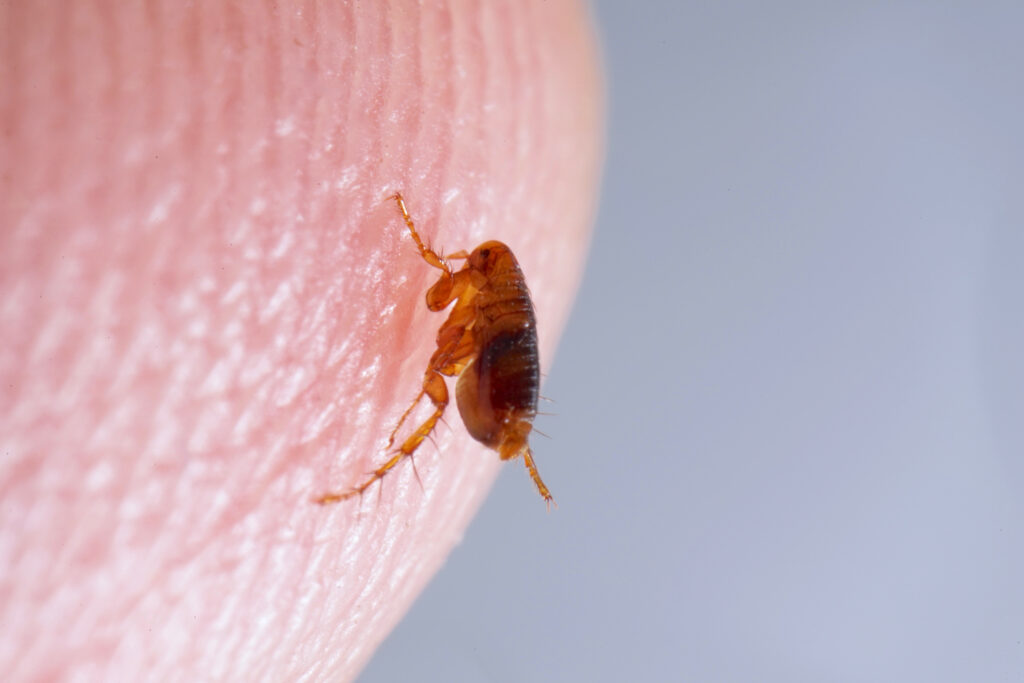
Spring is in the air. The weather is pleasant, flowers are blooming, daylight hours extend past dinner time but then you notice those annoying insects flying around. While it’s probably safe to say we’d all prefer not to be bitten or stung while outside enjoying the weather, let’s talk about some of the most common types of flying insects in our areas so you know what to watch out for.
FLYING BITING INSECTS
Asian Tiger Mosquito – These mosquitoes are found in all Florida counties and are the dominate mosquito out this spring due to the warmer weather and increased rain over the past couple of weeks. Ways to reduce breeding spots include eliminating areas of standing water found around the home like emptying birdbaths, pet bowls, and lawn and gardening equipment. This species of mosquito is unique in that it typically feeds during the daylight hours unlike many other species that feed only at dusk and dawn. Like other mosquito species, only females require a blood meal to produce eggs.
Yellow Fly – The Yellow Fly is known as a fierce biter for the prolonged pain, swelling and itching one bite can leave behind. Their yellow bodies have a black stripe with yellow fur and brilliant blue-green eyes with two purple bands. Like the other flies, the female is the inflictor of pain. Peak season lasts from April through June so cover up while outside to avoid being bitten. The good news is that they are notoriously slow. If you think you have a quick hand, you may be able to shoo them away or whack them with a flip flop.
Black Fly – This fly has a wide range of host species including humans, cattle, horses, sheep, goats, poultry and other livestock, wild mammals, and birds. The females are daytime biters that prefer low wind conditions and are not restricted to shaded or humid sites. They usually do not go indoors. You may want to keep a hat handy as this fly likes to swarm around, preferring to land and crawl on the hosts’ head, hair, ears, or any exposed skin.
Deer Fly – They can be nasty creatures because of their bloodsucking behaviors. Males of the species spend their time seeking pollen while the females feed on blood. We’re using the word “feed” rather than “bite” because the female deer fly uses its jaw and sharp parts in its mouth to slice the skin. As the host (AKA victim!) bleeds, the fly uses its sponge-like mouth to soak up the fluid. Its saliva contains an anticoagulant because this pest wants to get as much blood as possible per slice, which means that a person may bleed a bit afterward. The spots can itch and be mildly painful; these symptoms can go up in intensity if the number of bites increases.
Biting Midge: Also called “No-see-ums,” these insects are often found in mud, sand, and other moist debris surrounding the edges of ponds, springs, lakes, and creeks. The warm summer months bring the highest levels of activity from adult midges of this species. Dusk and dawn are the peak feeding times, and they prefer to have little to no wind. Only adult females bite as they feed on blood using their rasping mouthparts. Ouch! The male midges feed on nectar.
FLYING STINGING INSECTS
At Turner Pest Control, we do not provide control services for honeybees, which have an essential role in the health of the ecosystem in Florida and throughout the country.
We do provide expert services to solve any issues you may have with wasps, other types of bees, and stinging insects on your property.
Cicada killer: This is a solitary wasp, operating solo. Yet, colonies of these wasps will nest together, with each pregnant female digging her own hole. They place an egg in the hole, along with a cicada that they’ve paralyzed for their offspring’s food. A similar species uses flies for that purpose. These wasps are black with pale yellow markings on their abdomen.
Paper wasp: These wasps are aggressive and sting people, often when they’re cleaning out wasps’ nests or trimming shrubs. This variety includes wasps that are yellow with brown markings, as well as black ones with yellow or red markings.
Africanized honeybee: This type of bee, unfortunately, can be quite aggressive. They can be especially dangerous to young people, those with disabilities, and elderly people—anyone, really, who may not be able to escape quickly. They like to nest near people, which can make matters worse, and they can be antagonized quite easily.
Yellow jackets: Both the eastern and southern varieties can also get agitated all too easily, and they can repeatedly sting. These are the bees often found near trash cans and dumpsters, the tops of soda cans, and so forth. A small benefit is that they eat insects that can damage your landscaping, whether that benefit outweighs the sting risk is a personal preference.
SCHEDULE A FREE INSPECTION TODAY
For your safety, let the experienced team at Turner Pest Control take care of your pest problems. You can schedule a free inspection online or call our team at 800-225-5305.



